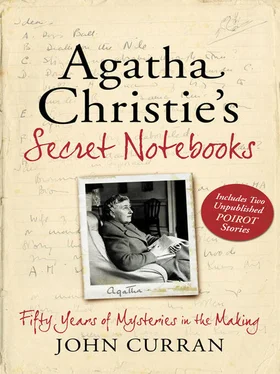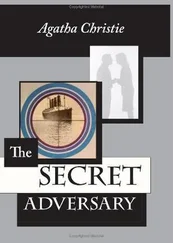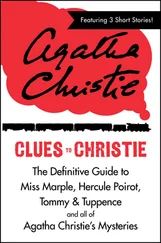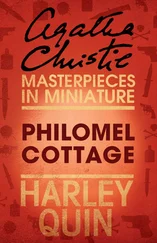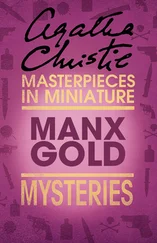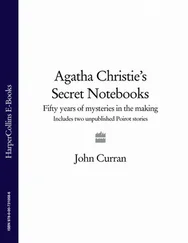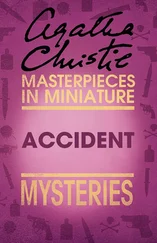There are two pages of Notebook 61 that contain rough notes for what was to become Hercule Poirot’s Christmas. The pages follow immediately after those for Appointment with Death, published six months earlier:
Blood Feast
Inspector Jones—comes to see old Silas Faraday Chamberlayne—diamond king from S.A.
Characters
A family such as
Arthur—the good stay at home one
Lydia—clever nervy wife
Mervyn—son still at home dilettante artist
Hilda—his very young wife—rather common
David—very mean—sensitive
Dorothy—his articulate wife
Regina—unhappy woman—separated from husband
Caroline—her daughter—fascinating—reportedly bad
Edward—her devoted husband—bad lot
Although some names are accurate—Lydia, Hilda, David—the personality traits are not reflected in the eventual characters; and the last three listed have no equivalents. The policeman’s name changes although Simeon Lee did make his fortune in South Africa.
Of the 65 pages of existing notes, however, most of them are in Notebook 21. Christie opens with the beginning of a quotation from Shakespeare’s Macbeth, which may have been intended as a title, and quickly follows this with sketches of the Lee family. She breaks off to write brief notes for what were to become Curtain and Sad Cypress and then returns to Hercule Poirot’s Christmas. The first draft of the characters is immediately recognisable, apart from the Nurse, who does not appear in the novel:
A. Who would have thought [the old man to have had so much blood in him?]
Old Simeon Lee—A horrid old man
Alfred—the good son—(a prig) bores his father
Lydia—Alfred’s clever well-bred bitter wife—she makes gardens
Harry?—The Prodigal son—he comes home and the old man likes him
Stephen Fane—A young man from S. Africa—son of Simeon’s partner—(he cheated him!)—S. is really Simeon’s son
Juanita Simeon’s grand-daughter [Pilar]—back from Spain—his daughter ran away with a Spaniard and J. is really not grand-daughter—latter was killed in revolution—J was her friend
The Nurse—says old man was going to leave her all his money—wanted to marry her. She was married already—her husband is in New Zealand
The course of the story is outlined in the extract below, the novel following this synopsis closely:
Possible course of story
1. Stephen in train going up to Midcourt—this drab people—his impatience—the sun he comes from—then his first sight of Pilar—exotic—different—reads label
2. Pilar in train—thinking—keyed up—her nervousness—handsome looking man—conversation—about Spain—the war—finally he reads label
3.Alfred and Lydia—conversation—she is like a greyhound—mention of her gardens—telephone call—Patterson—Horbury—she doesn’t like that man
4. George and Magdalene—or David and Hilda strong motherly woman
If G and M—his pomposity—and earnestness—his wife’s impatience—her vagueness at some point about a letter (she has a lover)—he says better off when my father dies—they must go for Xmas important not to offend old man—he has written saying he would like to have all his children round him at Xmas—sounds quite sentimental
5. David and H
He gets letter—nervous—neurotic passionately fond of his mother—won’t go to the house—she, wise and motherly, persuades him—he goes off and plays piano violently
6. Harry Hugo arrives—cheery word to old Patterson—the prodigal—I could do with a drink—greeting from Lydia—she likes him
7. Old man himself—Horbury—he asks about his family—then goes and gets out diamonds—his face devilish glee
Interview with Alfred
Interview with Harry
Talk about prodigal son to Horbury
There were still significant clues to be inserted, while she also paid attention to the description, given by various characters, of the ‘scream’ establishing the time of death—or so we are led to think—heard in the murder room:
Scenes to work in
(A) Portrait of old Lee P looks at it—found by someone
(B) Passport dropped out of window
(C) Statues in recess
(D) P. buys moustache
(E) Balloon
Screams
Alfred A man in mortal agony
Lydia Like a soul in hell
Harry Like killing a pig
David Like a soul in hell
Although the plotting follows closely the course of the novel with relatively few deviations, Christie did try a few variations, the main ones being the presence of a co-conspiring nurse or a criminal husband-and-wife. At this stage ‘Drew’ is the forerunner of Sugden, the investigating officer, but there is no mention of his being a policeman:
Who is murderer?
Nurse—a fairly good looking young woman of thirty (actually his daughter)—her desire for revenge
Drew is the man—Why? Illegitimate son—then Nurse is his sister—the two of them planned it
or—like Macbeth—a man and his wife do this—son of an earlier marriage?
Possibly his second marriage was illegal—he makes a will so worded that the children of his second marriage inherit even if not legitimate—that will is destroyed—a draft is prduced by Nurse leaving it to her.
A new idea—is Nurse married to one of the sons?—the gay prodigal?—he manages to pull a string at the right moment As suggested by her crossing-out of the idea here, Christie did not utilise the nurse in this novel. But the homicidal nurse was to resurface two years later in Sad Cypress.
Evil under the Sun
9 June 1941
Beautiful vamp Arlena Marshall is murdered while staying at the same glamorous hotel on Smuggler’s Island where Hercule Poirot is holidaying. He investigates her murder, which involves a typewriter, a bottle of suntan lotion, a skein of wool and a packet of candles.
Evil under the Sun was written during 1938 and received, and read, by Edmund Cork by 17 February 1939. It had first appeared, in the USA, as a serial towards the end of 1940. At first glance Evil under the Sun and ‘Triangle at Rhodes’ (see Chapter 8) appear to be the same story. Both feature Hercule Poirot, a beach setting and two couples as the main protagonists. In each case, one couple consists of a vamp and a quiet husband, the other a charmer and a ‘mouse’ (in Christie’s own word). And both stories exemplify perfectly Christie’s fertility of plot invention because, despite these not insignificant similarities, the solutions and killers are completely different. In each case the triangle the reader is encouraged to envisage is completely wrong—and also completely different. In both cases clever stagemanagement forces the reader to look in the wrong direction despite, in the case of the novel, abundant clues to the truth.
There are 60 pages of Notebook showing its origins, and thanks to these we can see the detailed working-out that went into one of Christie’s most ingenious novels. The setting exists in reality as Burgh Island, off the coast of Devon, a venue well known to Christie as she stayed at the hotel there on a few occasions. The island is cut off from the mainland twice a day at high tide and is reached by a sea-tractor. She utilises its geography to suit her purposes in creating a perfect alibi.
That storehouse of plot devices, The Thirteen Problems, yet again provided the rough basis for this novel. ‘A Christmas Tragedy’ features two people, the murderer and a witness (in this case Miss Marple herself), ‘finding’ a dead body before it has been murdered, thereby providing the killer with an impeccable alibi. In the case of the short story the body is that of a natural death victim, conveniently dead two hours earlier, but in the novel it is the live body of the killer’s accomplice. Both plots feature a large and camouflaging hat (also a feature of Dead Man’s Folly). Many refinements were obviously possible in the course of a novel—a larger cast of suspects, the added complication of a triangle situation, a warm beach to confuse the time of death instead of a hotel room and a more elaborate alibi for the killer. But it is essentially the same plot.
Читать дальше
Конец ознакомительного отрывка
Купить книгу
